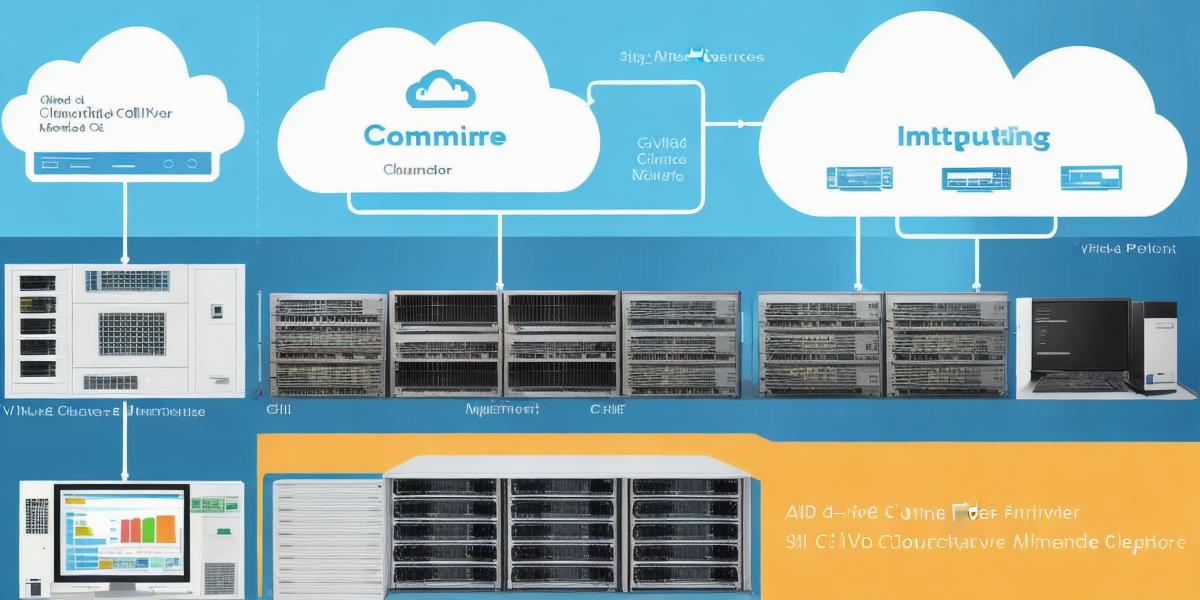Cloud vs Virtual Server: Understanding the Virtual Landscape

As a programmer, you know the importance of having access to powerful virtual infrastructure. But what exactly is the difference between cloud and virtual server? In this article, we’ll explore the similarities and differences between these two virtual landscapes, and how they can help you achieve your programming goals.
The Basics of Cloud Computing
Cloud computing refers to the delivery of computing resources over the internet. This includes servers, storage, databases, and applications that are hosted on remote data centers and accessed through a web browser or API. The main advantage of cloud computing is its scalability, allowing you to quickly add or remove resources as needed without worrying about infrastructure costs or maintenance.
The Basics of Virtual Servers
A virtual server, on the other hand, is a software-based emulation of a physical computer that runs its own operating system and applications. It’s hosted on a physical server but acts like an independent machine, allowing you to deploy your own web server, email server, or any other type of application. Virtual servers are commonly used for testing, development, and staging environments.
Similarities Between Cloud and Virtual Server
Both cloud computing and virtual servers offer powerful virtual infrastructure that can be easily scaled up or down as needed. They also provide access to high-performance hardware and software resources without requiring significant upfront investments in physical equipment.
Differences Between Cloud and Virtual Server
The main difference between these two virtual landscapes is how they are managed and accessed. Cloud computing resources are hosted by third-party providers and accessed through the internet, while virtual servers are typically hosted on your own physical hardware or in a data center that you manage yourself.
Cloud computing also offers additional services such as load balancing, security, and disaster recovery that may not be available with virtual servers. Additionally, cloud computing often includes a pay-as-you-go pricing model, which means you only pay for the resources you use, while virtual servers require upfront investments in hardware and maintenance costs.
Case Study: Moving from Virtual Server to Cloud Computing
Let’s take a look at an example of how one company moved from virtual server to cloud computing. They were running their own data center with multiple virtual servers hosting various applications. However, as the company grew, they found it difficult to keep up with the maintenance and upgrade costs of their infrastructure. They also realized that their applications were not scalable and required more resources than their virtual servers could provide.
The company decided to migrate to a cloud-based solution, which allowed them to easily scale up or down as needed without worrying about infrastructure costs or maintenance. They also took advantage of the additional services offered by the cloud provider, such as load balancing and disaster recovery. The result was a more efficient and cost-effective way of running their applications, allowing them to focus on their core business.
FAQs
Q: What is the main difference between cloud computing and virtual servers?
A: Cloud computing is hosted by third-party providers and accessed through the internet, while virtual servers are typically hosted on your own physical hardware or in a data center that you manage yourself.
Q: Can I use cloud computing for testing and development environments?
A: Yes, many cloud providers offer specialized services for testing and development environments that can be easily scaled up or down as needed.
Q: What are the benefits of using virtual servers for my applications?
A: Virtual servers offer powerful virtual infrastructure that can be easily customized to meet your specific needs, without requiring significant upfront investments in physical equipment. They also provide access to high-performance hardware and software resources without worrying about maintenance costs.
Conclusion
In conclusion, cloud computing and virtual servers both offer powerful virtual infrastructure for programmers. While they have similarities in terms of scalability and cost-effectiveness, the main difference lies in how they are managed and accessed. By understanding








